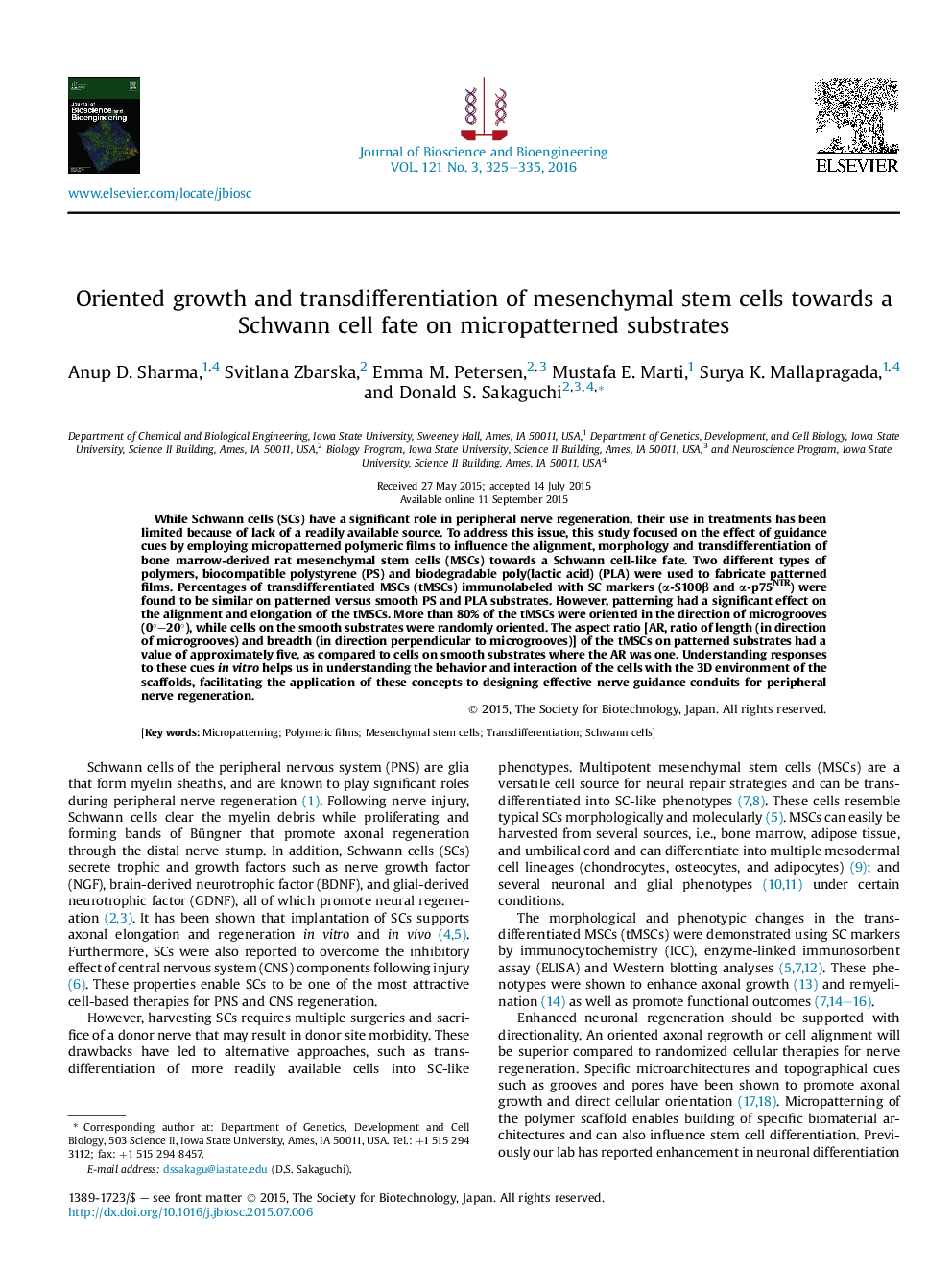| کد مقاله | کد نشریه | سال انتشار | مقاله انگلیسی | نسخه تمام متن |
|---|---|---|---|---|
| 20041 | 43154 | 2016 | 11 صفحه PDF | دانلود رایگان |
• Mesenchymal stem cells were successfully transdifferentiated to Schwann cell-like cells on micropatterned substrates.
• A high degree of transdifferentiation was observed on the polymeric substrates.
• Micropatterns significantly affected the morphology, elongation and orientation of the transdifferentiated cells.
• Micropatterns did not have any effect on cellular area of the cells as compared to cells growing on smooth substrates.
• Patterned films do not cause any deleterious effect on differentiation potential of cells.
While Schwann cells (SCs) have a significant role in peripheral nerve regeneration, their use in treatments has been limited because of lack of a readily available source. To address this issue, this study focused on the effect of guidance cues by employing micropatterned polymeric films to influence the alignment, morphology and transdifferentiation of bone marrow-derived rat mesenchymal stem cells (MSCs) towards a Schwann cell-like fate. Two different types of polymers, biocompatible polystyrene (PS) and biodegradable poly(lactic acid) (PLA) were used to fabricate patterned films. Percentages of transdifferentiated MSCs (tMSCs) immunolabeled with SC markers (α-S100β and α-p75NTR) were found to be similar on patterned versus smooth PS and PLA substrates. However, patterning had a significant effect on the alignment and elongation of the tMSCs. More than 80% of the tMSCs were oriented in the direction of microgrooves (0°–20°), while cells on the smooth substrates were randomly oriented. The aspect ratio [AR, ratio of length (in direction of microgrooves) and breadth (in direction perpendicular to microgrooves)] of the tMSCs on patterned substrates had a value of approximately five, as compared to cells on smooth substrates where the AR was one. Understanding responses to these cues in vitro helps us in understanding the behavior and interaction of the cells with the 3D environment of the scaffolds, facilitating the application of these concepts to designing effective nerve guidance conduits for peripheral nerve regeneration.
Journal: Journal of Bioscience and Bioengineering - Volume 121, Issue 3, March 2016, Pages 325–335
